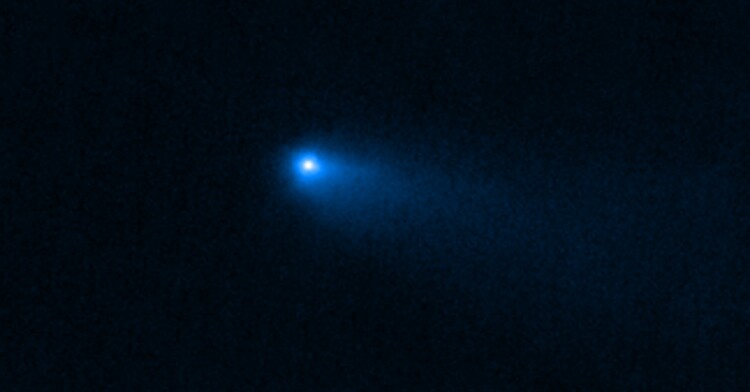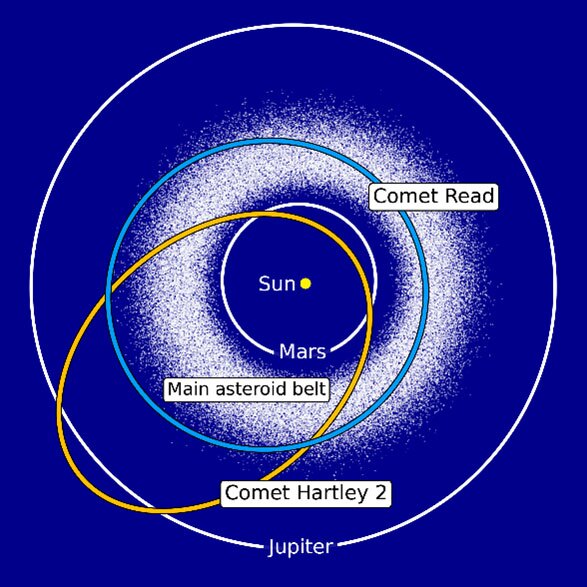Peculiar comet confirms existence of water ice in the asteroid belt

NASA, ESA, CSA, M. Kelley/University of Maryland; image processing: H. Hsieh/Planetary Science Institute, A. Pagan/STScI
When astronomers peer into the solar system’s asteroid belt, they expect to find millions of small, rocky bodies. Yet in 1996, researchers spotted an object in the main belt sporting a coma and tail made from vaporizing volatiles. Today fewer than 20 of the appropriately named main-belt comets are known, compared with thousands of comets whose orbits stretch into the outer solar system. Main-belt comets are still a mystery, as their origins are unknown, and they lead to questions about what distinguishes comets from asteroids.
The second main-belt comet ever discovered, comet 238P/Read, was recently observed using the Near Infrared Spectrograph on the James Webb Space Telescope (JWST). The observations revealed water vapor on comet Read, meaning water ice is present in the comet’s nucleus. It’s the only detection of water vapor within the asteroid belt, aside from on the dwarf planet Ceres. The other twist? The comet has hardly any carbon dioxide, a common volatile known to be present in many comets.
The University of Maryland’s Michael Kelley and colleagues compared the newly acquired spectrum with that of a more typical comet, called Hartley 2. Although comet Read’s water-vapor-emission feature was similar to Hartley 2’s, researchers found that the main-belt comet’s CO2 abundance with respect to water was smaller by at least a factor of 10. The lack of CO2 may be explained in two ways, says Kelley. CO2 may have already evaporated if the comet has been in orbit in the main belt for a long time, as it is much more volatile than water ice. Alternatively, there may have never been any CO2 to begin with if the comet formed in a warmer place in the solar system where the molecule could not be accreted.

H. Hsieh/Planetary Science Institute
The water vapor discovered in comet Read’s coma raises questions about the asteroid belt’s elemental makeup. If one main-belt comet contains water vapor, and therefore water ice, then others can too. “That presents the possibility there’s much more water ice in the asteroid belt,” Kelley says. “And if that’s true, many asteroids could be comets in disguise.” There is no universally agreed-upon definition of a comet. It is possible that asteroids may simply be comets that made their way into the inner solar system during its early formation and have since lost their volatile material. The discovery of water ice in the present-day asteroid belt only further confuses those definitions.
Although JWST will not be making future observations of comet Read, Kelley and his colleagues plan to further analyze it. They noted a broad absorption feature in its spectrum suggestive of ammonium salts, which may have formed at cold enough temperatures where ammonia ice could have existed. Ammonia ice and CO2 have similar sublimation temperatures, meaning comet Read may have hosted those volatiles in the past.
Additionally, Kelley and his colleagues will use JWST to study two more main-belt comets and determine how the CO2 abundances and water production rates compare with those of comet Read. Although comet Read alone may not change the definitions of comets and asteroids, there is potential for more observations to shake up how those terms are defined in the future. (M. S. P. Kelley et al., Nature, 2023, doi:10.1038/s41586-023-06152-y